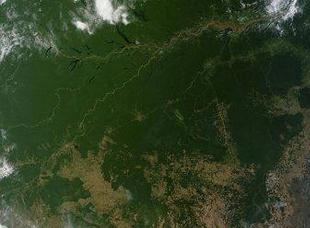Share
12 June 2014Amazonia is the beating heart of Brazil. And of the Earth. With an area of 3.3 million square kilometers, 40% of the total territory, it is the country with the largest biodiversity in the world. 20 percent of the world's fresh water flows into this region.An immense environmental heritage but at risk of deforestation: due to the Brazilian population growth and the growing global demand for soy, biofuels and meat, farmers and breeders are increasingly being pushed to convert their forest reserves - first into timber, then in agricultural lands and pastures - destroying one fifth of the forest to this day.
According to the WWF, every year over 1.5 million hectares of the Amazon are lost, every minute the equivalent of three football fields, and if deforestation rates continue at current rates, a quarter of the remaining Amazon region would be lost within the next 30 years and 37% within the next 50 years.
The race to save the Amazon has long started. The Brazilian government has launched some policies aimed at fighting or slowing deforestation, including the approval in 2012 of a new forestry code that has tightened environmental and financial measures, and above all the signing of an agreement with the WWF developed since 1998.
The agreement worth $ 215 million over the next 25 years is aimed at supporting the "Amazon Region Protected Areas" program which aims to transform 15% of the Amazon territory into protected areas, an area equivalent to Spain.

